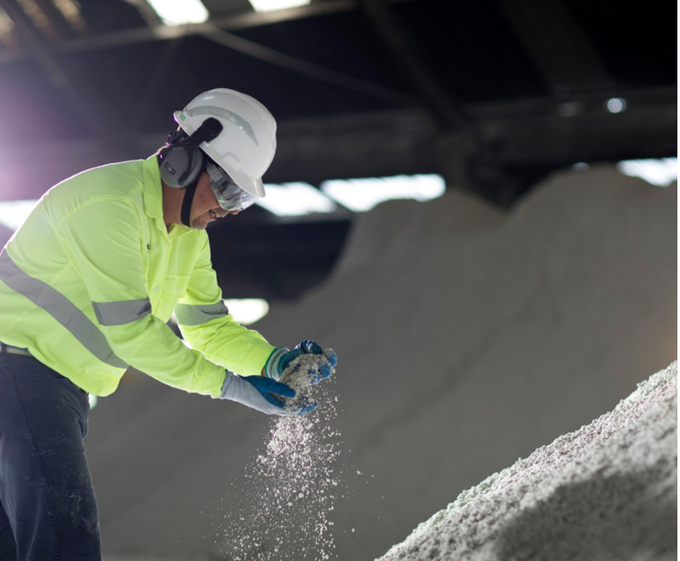November 25, 2025 | 06:15 GMT +7
November 25, 2025 | 06:15 GMT +7
Hotline: 0913.378.918
November 25, 2025 | 06:15 GMT +7
Hotline: 0913.378.918

Prices paid to chemical companies for fertilizers and other agricultural pesticides have increased more than 250% from 1986 to 2022. Photo: Mosaicco
The price of fertilizer has been on a steady increase since the late 1980s. This price increase has led American farmers to worry about a reliance on the global supply chain and launched federal incentives to make the chemicals domestically.
Prices paid to chemical companies for fertilizers and other agricultural pesticides have increased more than 250% from 1986 to 2022.
A major price increase occurred from 2007 to 2008, which was caused by a supply shortage.
The fertilizer industry’s most recent price jump was from 2021 to 2022, when the price of fertilizer rose 28%, according to the U.S. Bureau of Labor Statistics. The agency collects and analyzes the Producer Price Index, an indicator that measures the change in prices paid to a producer for their goods or services over time and accounts for inflation.
One significant contributing factor to the recent price spike has been the ongoing Russian -Ukraine war. Both nations are major fertilizer suppliers, and trade restrictions and embargoes have increased demand for American-made fertilizer products. The PPI data does not include foreign imports.
Price data for 2023 has not been finalized yet, but preliminary data indicates fertilizer prices decreased.
In December, an Iowa-based merger of major fertilizer companies fueled backlash from agricultural watchdog groups and local officials concerned over increased consolidation. Fertilizer companies have seen record profits in recent years, sparking federal attention.
The Biden administration announced plans in recent years to expand American-made fertilizer and spur competition with a $500 million grant program. Last summer, the administration increased the program’s funding pool to $900 million.
(investigatemidwest)
/2025/11/24/3616-2-141832_513.jpg)
(VAN) FSC certification has helped increase the value of thousands of hectares of planted forest timber under the management of the Xuan Loc Protection Forest Management Board, particularly in terms of selling prices.

(VAN) More than 100 shoppers queued for a chance to get a kilo or so of Japanese rice for 500 yen ($3.32) by heaping as much grain into a small wooden box as possible.

(VAN) Benchmark international prices of milled declined in October as harvests started or improved in some parts of the globe.

(VAN) Show cause orders will be issued to retailers who sell imported rice at prices exceeding the maximum suggested retail price (MSRP) of P43 per kilo, Philippines Agriculture Secretary said in a statement on Thursday.

(VAN) Coffee prices on October 20, 2025, remained stable domestically, trading at 113,500–114,500 VND/kg. Similarly, global coffee prices also moved sideways.

(VAN) By October, Vietnam’s coffee exports had surpassed USD 7 billion for the first time and will exceed USD 8 billion within this year.

(VAN) Illinois rancher says Texas, Oklahoma, Kansas lost grass and forage, forcing massive cattle liquidation.